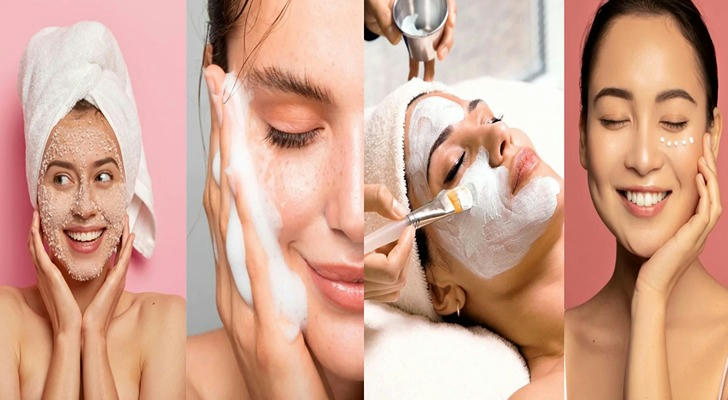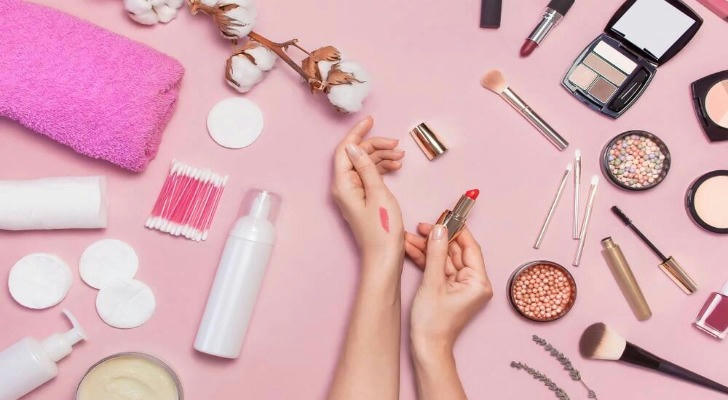A complete analysis of beauty courses: the key to opening the journey of beauty
In today's society, the beauty industry has become an important part of the US economy, and its market size is large and continues to grow. According to the Bureau of Labor Statistics, employment opportunities in the beauty industry are expected to grow by 13% in the next decade, much higher than the average for all occupations. This growth trend not only reflects the increase in consumer demand for beauty services, but also highlights the career potential of the beauty industry. For those who want to enter this industry full of creativity and opportunities, understanding the content and value of beauty courses is the first step towards success. This article will comprehensively introduce various aspects of American beauty courses to help you better understand this field.

1. Types of beauty courses
(I) Basic beauty courses
Basic beauty courses are the starting point for all beauty studies and are suitable for beginners. These courses usually include the following aspects:
Skin care: Learn the basic structure and type of skin (dry, oily, mixed, sensitive, etc.) and daily care methods. Students will master basic skills such as how to cleanse, exfoliate, moisturize and mask facial care.
Cosmetics use: Understand different types of cosmetics (foundation, lipstick, eye shadow, etc.) and how to use them. Students will learn how to choose suitable cosmetics according to skin color, occasion and personal style, and master basic makeup skills.
Basics of Nail Art: Introduces the basic structure and care methods of nails, including nail trimming, polishing, and applying nail polish. Students will also learn how to perform simple nail art designs, such as French manicure and colored manicure.
Hair Design: Learn basic hair design techniques, such as cutting, blow-drying, perming, and dyeing. Students will master how to design a suitable hairstyle according to face shape and personal style.
(II) Professional Beauty Courses
Professional beauty courses are designed for students who want to develop in-depth in the beauty industry. These courses usually include the following aspects:
Advanced Skin Care: In-depth study of the physiological structure and pathological changes of the skin, and master advanced skin care techniques, such as microneedle therapy, laser beauty, chemical exfoliation, etc. Students will also learn how to develop personalized care plans based on the customer's skin problems.
Professional Makeup: Learn advanced makeup techniques, including fashion makeup, bridal makeup, stage makeup, etc. Students will master how to design unique makeup according to different occasions and needs, and learn makeup color theory and matching techniques.
Nail Art: Learn complex nail design techniques, such as 3D nails, crystal nails, gel nails, etc. Students will also learn how to use a variety of nail tools and materials, as well as how to maintain and repair nails.
Hair Design and Styling: Learn advanced hair design techniques, including complex hair cutting, perming and dyeing techniques. Students will master how to design personalized hairstyles based on the customer's face shape, hair quality and personal style, and learn hairstyle styling techniques and maintenance methods.
(III) Business and Management Courses
In addition to technical skills, success in the beauty industry requires good business and management skills. These courses usually include the following aspects:
Marketing: Learn how to promote beauty services and products, including brand building, social media marketing, customer relationship management, etc.
Customer Relationship Management: Learn how to build good relationships with customers, provide quality customer service, and improve customer satisfaction and loyalty.
Financial Management: Learn how to manage the finances of a beauty business, including budgeting, cost control, profit analysis, etc.
2. How to study beauty courses
1. Full-time courses
Full-time courses are the first choice for many students because they can be completed in a shorter time. Full-time courses usually include theoretical learning and practical operations, and students need to study in class for several hours every day. This type of course is suitable for students who have enough time and energy to devote to learning.
2. Part-time courses
Part-time courses are suitable for students who have work or other responsibilities. This type of course is usually held in the evening or on weekends, and students can choose the study time according to their own schedule. The study time of part-time courses is relatively long, but it allows students to complete their studies without affecting their work and life.
3. Online courses
With the development of the Internet, online courses are becoming more and more popular. Online courses allow students to study at any time and any place, providing great flexibility. Students can learn beauty knowledge and skills through video tutorials, online discussions, and virtual laboratories. This type of course is suitable for students who like to learn independently.
3. Certification and qualifications of beauty courses
After completing a beauty course, students usually need to pass relevant certification exams to obtain professional qualifications. These certification exams are organized by professional beauty industry associations or government agencies to ensure that students have sufficient knowledge and skills to engage in beauty work. After obtaining certification, students can find job opportunities in beauty salons, cosmetics companies, film and television industries, etc.
IV. Career prospects in the beauty industry

The beauty industry is a field full of opportunities and offers a variety of career options. Here are some common career paths:
Beautician: Work in a beauty salon to provide customers with skin care, makeup, manicure and other services.
Hairdresser: Work in a hair salon to provide customers with hair cutting, perming, hair dyeing and other services.
Makeup artist: Work in the film and television industry, fashion industry or bridal makeup field to provide customers with professional makeup services.
Nail technician: Work in a nail salon to provide customers with nail design and care services.
Beauty consultant: Work in a cosmetics company or in the field of beauty product sales to provide customers with professional beauty advice and product recommendations.
Beauty educator: Work in a beauty school or training institution to teach beauty courses and cultivate a new generation of beauty professionals.
V. Case Analysis: The Successful Path of American Beauticians
Emily is an American young person who is passionate about the beauty industry. After graduating from high school, she chose to enter the beauty industry and began her own learning journey. She enrolled in a full-time basic beauty course at a local beauty school and learned knowledge such as skin care, cosmetics application, nail art basics and hair design. Through practical operation and internship opportunities, she gradually mastered these skills and passed the certification exam to obtain the qualification to work. With the skills she learned, Emily successfully entered a well-known beauty salon to work. With her professional skills and good service attitude, she won high praise from customers and gradually became a star beautician in the salon.
